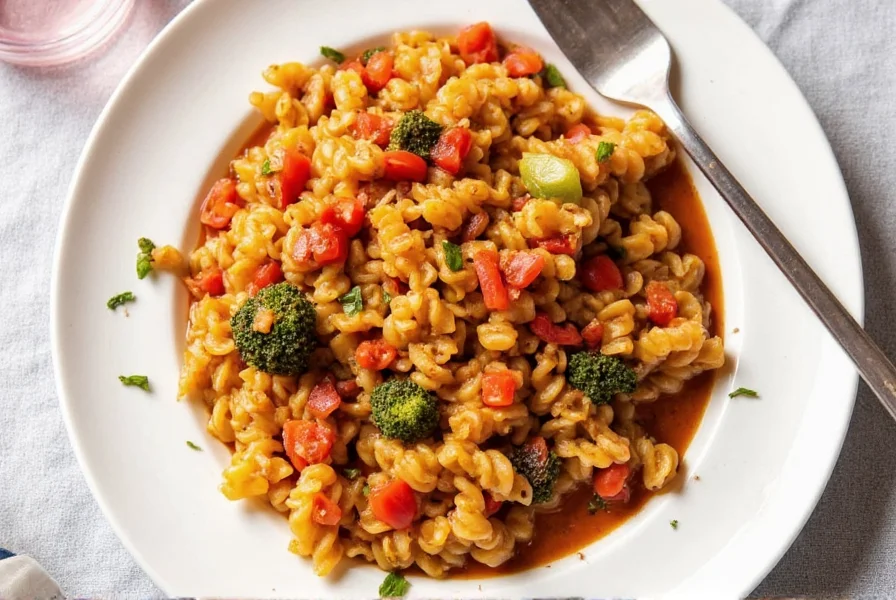Roasted Vegetable Pasta Sauce: A Flavorful Twist on Classic Comfort Food
Table of Contents
Introduction to Roasted Vegetable Pasta Sauce
When it comes to comfort food, nothing beats a hearty plate of pasta. But what if you could take that classic dish to the next level with a sauce that’s rich in flavor and packed with nutrition? Enter roasted vegetable pasta sauce—a vibrant, healthy twist on traditional tomato-based sauces.
Roasted vegetable pasta sauce is made by roasting an assortment of colorful vegetables—think eggplant, zucchini, bell peppers, and cherry tomatoes—and blending them into a smooth, creamy sauce. The result is a dish that's not only delicious but also bursting with vitamins and antioxidants.
Why You Should Try Roasted Vegetable Pasta Sauce
If you're someone who loves experimenting with new flavors or looking for healthier alternatives, this sauce is a must-try. Here are some reasons why:
- Healthier Option: It's naturally low in calories and high in fiber, making it a great alternative to heavy cream-based sauces.
- Vibrant Flavors: The natural sweetness of roasted veggies adds depth and complexity to your pasta.
- Versatile: You can use it as a base for different dishes like lasagna, baked pasta, or even as a dip.
- Easy to Customize: Swap out veggies based on your preferences or seasonal availability.
Essential Ingredients for the Perfect Sauce
To make a mouthwatering roasted vegetable pasta sauce, you'll need a few key ingredients. Here's a breakdown of what you'll find in a typical recipe:
| Ingredient | Quantity | Role in Sauce |
|---|---|---|
| Eggplant | 1 large | Provides a creamy texture |
| Zucchini | 1 medium | Contributes moisture and mild flavor |
| Bell Peppers | 2 | Adds sweetness and color |
| Cherry Tomatoes | 1 cup | Brings acidity and freshness |
| Olive Oil | 2 tablespoons | Helps roast the veggies and adds richness |
| Garlic | 2 cloves | Enhances flavor and aroma |
Top 5 Tips for Making a Delicious Sauce
While the concept sounds simple, there are a few tricks to ensure your roasted vegetable pasta sauce turns out perfectly every time. Here are five essential tips:
- Use Fresh Vegetables: Fresh produce will give your sauce more vibrant color and better flavor. Avoid using pre-cut or frozen veggies if possible.
- Don’t Over-Roast: Over-roasting can lead to bitterness. Keep an eye on the vegetables and remove them from the oven once they’re tender and slightly caramelized.
- Season Well: Don’t forget to season your veggies before roasting. Salt, pepper, and herbs like oregano or thyme can elevate the overall taste.
- Blend Until Smooth: Use a high-powered blender or food processor to achieve a silky texture. If the sauce is too thick, add a bit of pasta water or vegetable broth to adjust consistency.
- Experiment with Herbs and Spices: Add fresh basil, Parmesan cheese, or even a splash of balsamic vinegar to give your sauce a unique twist.
Buying Guide: Choosing the Right Tools and Ingredients
Whether you're a seasoned chef or just starting out, having the right tools and ingredients can make all the difference. Here’s a quick guide to help you choose the best options for your roasted vegetable pasta sauce:
Essential Kitchen Tools
- Roasting Pan: A good-quality roasting pan ensures even heat distribution and prevents sticking. Look for one with a non-stick surface or a glass lid for easy monitoring.
- High-Powered Blender: For a smooth, creamy sauce, a powerful blender is a must. Brands like Vitamix or Blendtec offer excellent performance.
- Cutting Board and Knife: A sturdy cutting board and sharp knife make prepping vegetables faster and safer.
Choosing the Best Vegetables
While the basic recipe includes eggplant, zucchini, bell peppers, and cherry tomatoes, you can customize your sauce with other vegetables. Here are some popular additions:
- Carrots: Adds natural sweetness and color.
- Onions: Enhances depth of flavor when caramelized.
- Mushrooms: Offers an earthy, umami-rich profile.
When selecting vegetables, look for firm, unblemished ones. They should be free of bruises or soft spots, which can affect the final texture and taste of your sauce.
Herbs and Spices to Consider
Herbs and spices can transform your roasted vegetable pasta sauce from ordinary to extraordinary. Here are some popular choices:
- Basil: Adds a fresh, aromatic note.
- Oregano: Offers a robust, Mediterranean flavor.
- Fresh Thyme: Provides a subtle, herbal touch.
- Garlic Powder: Adds extra depth without overwhelming the natural flavors.
Conclusion
Roasted vegetable pasta sauce is more than just a trendy dish—it's a celebration of flavor, health, and creativity. Whether you're a spice enthusiast or a casual cook, this sauce offers a perfect blend of simplicity and sophistication.
By understanding the ingredients, mastering the technique, and choosing the right tools, you can create a sauce that not only tastes amazing but also elevates your pasta game. So, grab your favorite veggies, fire up the oven, and get ready to savor a meal that's both comforting and nutritious.

The roasted vegetable pasta sauce is a versatile, flavorful, and healthy option that brings together the best of seasonal produce and culinary creativity.










 浙公网安备
33010002000092号
浙公网安备
33010002000092号 浙B2-20120091-4
浙B2-20120091-4